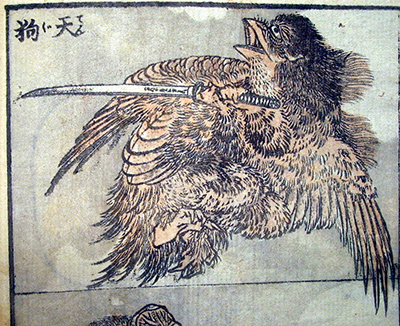Katsushika Hokusai was a Japanese drawing, painting and graphic artist whose works greatly enhanced the Japanese visual culture. He played an important role as a representative of the Japanese art direction Ukiyo-e. He accomplished great art masterpieces still appreciated to date. One of such paintings is the Drawing of a Tengu.
The drawing of a Tengu is a mythological painting based on the Tengu character in the Japanese history. Tengu was an interesting character with several mysteries surrounding his mythology. It has been depicted as a flying creature or a type of demon in the Japanese mythology. Some refer to it as a shape-shifting trickster god of the mountains taking the bird-like form. Tengu is commonly portrayed with wings and talons, and sometimes hatching from an enormous egg.
The Tengu character in Hokusai’s art borrows from a fierce demon from Chinese folklore referred to as tiangou. Literature from the Chinese describes it as a fierce anthropophagous canine beast resembling a shooting star. However, other descriptions liken it to a dog creature. The first mention of Tengu in Japan brought out the character as a heavenly dog or a star that comes before a military uprising. Its transformation to a bird-like creature later in the folklore is not clear but was later embraced and featured in several pieces of art including Hokusai’s drawing of a Tengu.
The Hokusai's Drawing of a Tengu features the Ukiyo-e style which refers to pictures of the floating world. The design featured colorful brush paintings, ink drawings as well as woodblock prints. The painting falls under the beasts and dragons category which forms an integral part of the Japanese mythical stories. Hokusai’s painting depicts his personal understanding as well as an appreciation of nature, myth, and history; an aspect that gave depth to his work.
The drawing of a Tengu was particularly inspired by Hokusai’s keen eye and passion for the natural world. He would travel around the world to collect books containing rich cultures. This ensured that he never ran short of ideas and influences for new pieces of work. With influence from Sesshu Toyo and Chinese painting styles, the author of the woodblock series has gained international recognition. The serial painter has other 167 artworks recognized in the history of art today.




